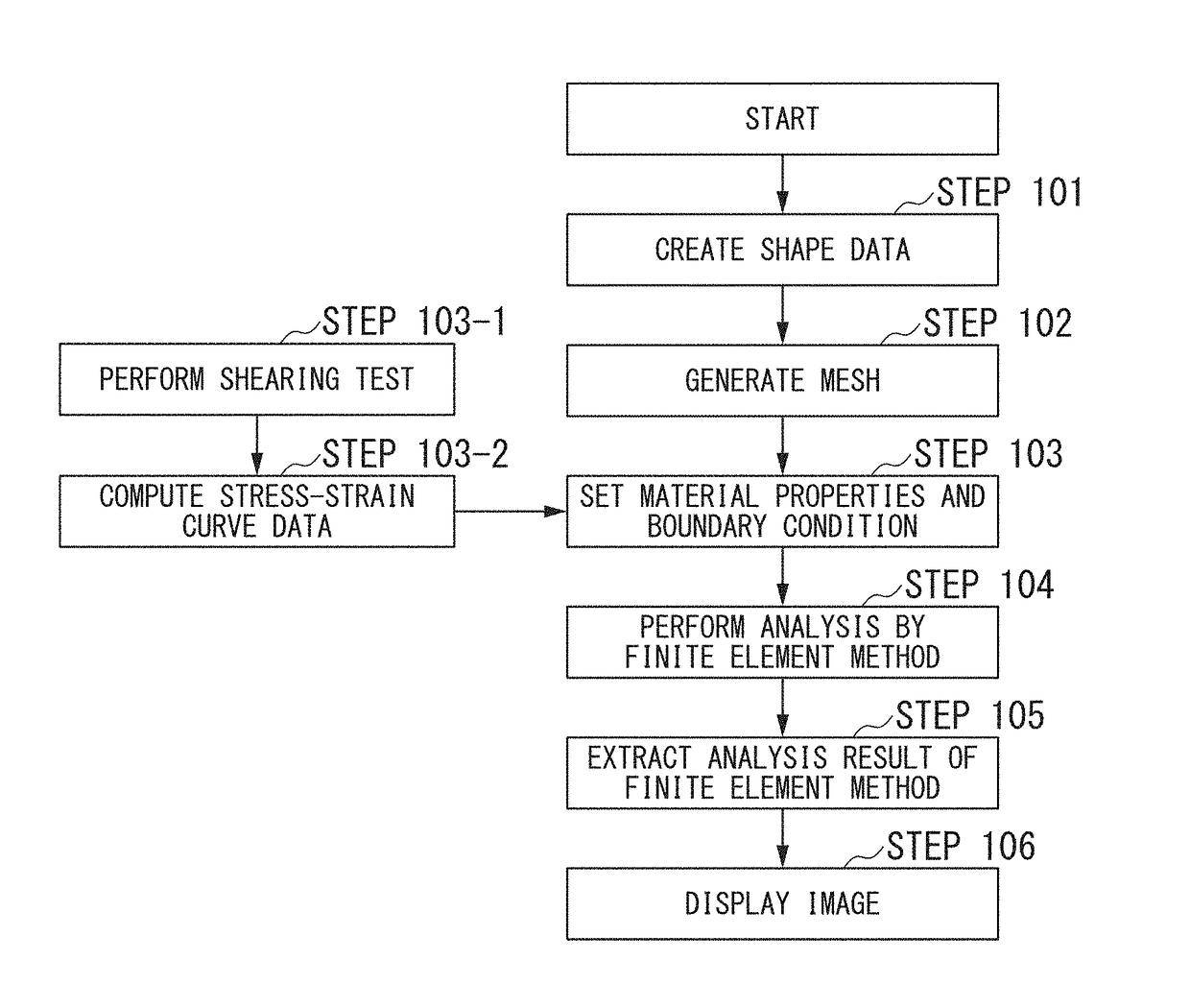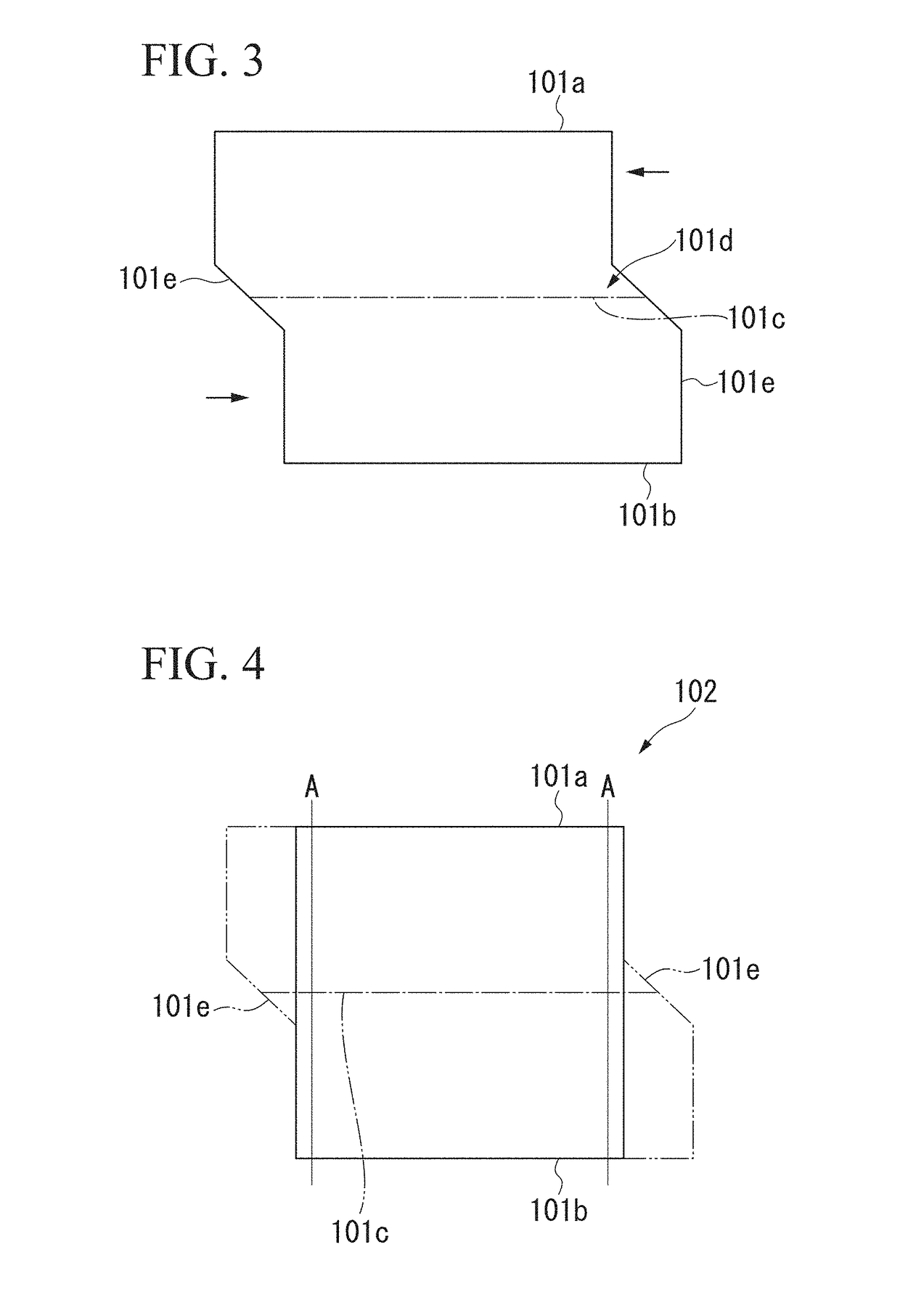Evaluation method of plastic material and evaluation method of deformation processing of plastic material
a plastic material and evaluation method technology, applied in the direction of material analysis, instrumentation, design optimisation/simulation, etc., can solve the problems of high error rate, deterioration of flow stress, and deterioration of the accuracy of forming analysis when deformation processing is performed, so as to reduce the number of plastic sheets prepared, reliably remove cracks, and high accuracy
- Summary
- Abstract
- Description
- Claims
- Application Information
AI Technical Summary
Benefits of technology
Problems solved by technology
Method used
Image
Examples
first embodiment
[0123]Hereinafter, an evaluation method of the steel according to the first embodiment of the present invention will be described with reference to FIGS. 2 to 7.
[0124]The evaluation method of the steel according to the embodiment includes: [1-1] a first shearing process of performing the shearing deformation with respect to a first steel sheet 101; [1-2] a partial stress-strain curve data obtaining process of obtaining first partial stress-strain curve data from a measurement result of the first shearing process; [1-3] an outer form removing process of removing the outer form part of first steel sheet 101 after the shearing deformation, and obtaining a second steel sheet 102; [1-4] a second shearing process of performing the shearing deformation with respect to the second steel sheet 102; [1-5] a partial stress-strain curve data obtaining process of obtaining second partial stress-strain curve data from a measurement result of the second shearing process; and [1-6] a synthesized str...
second embodiment
[0154]The evaluation method of the steel according to the second embodiment of the present invention is an evaluation method of the steel for obtaining the partial stress-strain curve data by preparing two or more steel sheets having the preliminary strain amounts different from each other, and by performing the simple shearing deformation with respect to each of the steel sheets, and further, for obtaining the synthesized stress-strain curve data based on the partial stress-strain curve data.
[0155]In addition, as a modification example, in the shearing process, similar to the first embodiment, the simple shearing deformation may be repeatedly performed again one or more times with respect to the steel sheet of which the outer form part of the steel sheet deformed by the simple shearing deformation is removed.
[0156]In the embodiment, unlike the first embodiment, two or more steel sheets of which the components and structures are the same, are prepared. One of the prepared steel shee...
third embodiment
[0215]In the evaluation method of the steel according to the embodiment, by employing a new approximation instead of the approximation similar to the Swift equation of the related art with respect to one piece of partial stress-strain curve data obtained by the shearing process described in the first embodiment and the second embodiment, highly accurate synthesized stress-strain curve data is obtained.
[0216]Furthermore, highly accurate synthesized stress-strain curve data may be obtained by employing new approximation to the plural pieces of partial stress-strain curve data obtained by the shearing process described in the first embodiment and the second embodiment.
[0217]Hereinafter, the evaluation method of the steel according to the third embodiment of the present invention will be described with reference to FIGS. 23 to 28.
[0218]The evaluation method of the steel according to the embodiment includes: [3-1] a first shearing process of performing the shearing deformation with respe...
PUM
| Property | Measurement | Unit |
|---|---|---|
| shear stress | aaaaa | aaaaa |
| stress | aaaaa | aaaaa |
| stress- | aaaaa | aaaaa |
Abstract
Description
Claims
Application Information
 Login to View More
Login to View More - R&D
- Intellectual Property
- Life Sciences
- Materials
- Tech Scout
- Unparalleled Data Quality
- Higher Quality Content
- 60% Fewer Hallucinations
Browse by: Latest US Patents, China's latest patents, Technical Efficacy Thesaurus, Application Domain, Technology Topic, Popular Technical Reports.
© 2025 PatSnap. All rights reserved.Legal|Privacy policy|Modern Slavery Act Transparency Statement|Sitemap|About US| Contact US: help@patsnap.com



